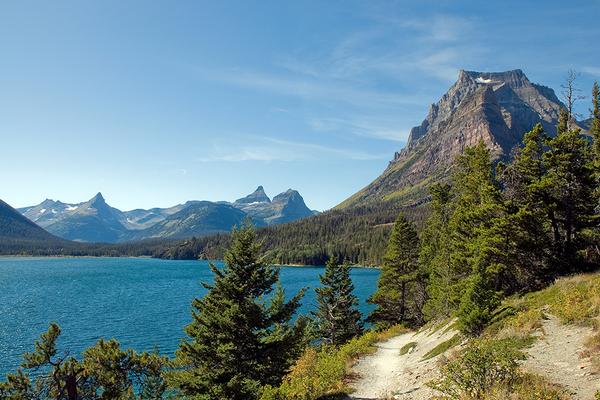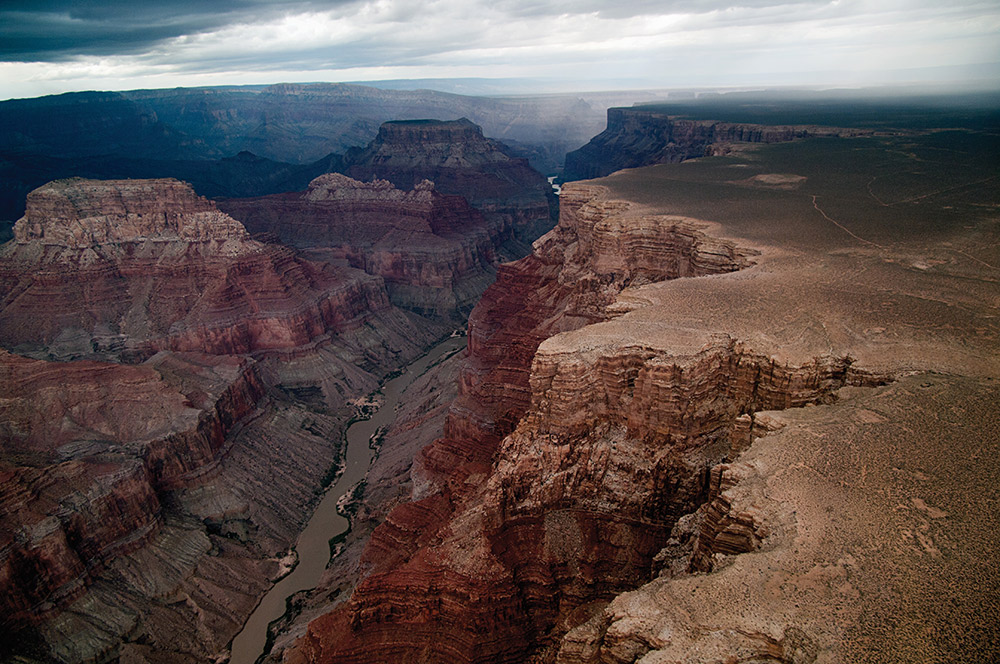The muse of creative greats such as Ansel Adams, John Muir, and Rudyard Kipling (to name a few), America’s national parks have proven they leave their mark. There’s no doubt — your visit will have the same effect on you, but there are a lot of things to consider to ensure that you get the most out of your experience in the great outdoors.
It’s important to be respectful of the area you’re visiting — a little preparation leading up to your trip will go a long way. Depending on what season you’re travelling, you may need to make adjustments, but we’ve created a list of suggested gear to cover your basic needs and some other considerations in advance of your visit to America’s national parks.

Glacier National Park in Montana. Photo courtesy Gary Arndt.
1. Bring backup batteries and extra memory cards for your camera
You’ll definitely want your camera and whatever it takes to keep it charged. Be mindful that at lower temperatures, batteries produce less current — so they discharge much more quickly. That’s good to keep in mind if you’re at higher altitudes or visiting on colder nights. Pack batteries close to your person, so that they stay at a consistent temperature. Store them in your pockets, for example, rather than your pack. They’ll last longer!
Extra memory cards will also be important. You’re not going to want to delete images on the fly. After all, it can be challenging to find the right exposure when shooting outdoor landscapes (especially in forested areas). So you may want to consider taking more than one shot of a scene — a technique called “exposure bracketing.”
Most of today’s SLRs offer this feature — which will automatically take two more pictures: one slightly under-exposed, and the second one slightly over-exposed. By taking these three shots at different exposures, you’ll make sure you’ve got the best shot. Of course, this takes up additional memory — but you’ll be assured of photos worthy of framing.

You won't want to miss this shot in Death Valley, California.
2. Test drive your sneakers or hiking boots
Mountain hiking can be hard on unsupported ankles. Be sure to break your boots in before you hit the trails! When breaking in new boots, you’re going to want to take it slow. Wear your new boots in the morning, when the weather is cooler and your feet are well rested. After some vigorous walking, your feet will start to swell and sweat — causing friction and ultimately blisters. So switch to an already broken-in pair of shoes in the afternoon.
Of course, there’s nothing worse than getting blisters on your feet half way up a mountain; they can cause some serious pain and really put a damper on the rest of your trip. So be sure to pack some blister protection (Moleskin is the good stuff.) Also, consider waterproof footwear or some sandals if you’re anticipating any slot canyons or streambed hiking. You’ll want sandals with clips rather than Velcro, as it tends unfasten when exposed to water. They’re great, for example, if you’re hiking through Zion National Park’s beautiful but watery canyons.

Hiking in Yosemite.
3. Choose the right clothes
For hiking, quick-dry shorts and lightweight long-sleeve shirts can help you beat the heat. When shopping, you’ll see different terms used to describe essentially the same thing — technical, performance, wicking. But they all offer an advantage over your favourite cotton t-shirt: they move moisture away from your skin to keep you dry. Pants with zip-off lowers will protect your legs when needed and can convert to shorts in a flash. They can also double as swimwear for an impulsive dip in the lake or hot spring you may randomly run across.
Of course, evenings can be cooler — especially at higher altitude. Scarves, hats, jackets, gloves, and socks will keep you toasty warm in your sleeping bag. When hiking in the summer, it’s best to use a wicking short-sleeve then add a light long-sleeved layer or a mid-weight half zip. Just remove a layer to regulate heat as needed. A base layer can be purchased online or at any outdoor retailer. The best ones are lightweight, hold their warmth if they get wet, and pack away neatly in your bag, allowing for that extra protection if the nights suddenly get colder than forecasted.
4. Load up on sun protection
Pack up your hats, sunscreen, and light clothing — the last thing you’ll want to contend with when exploring America’s great outdoors is a sunburn. After all, there’s no better marker of a tourist than one who bears the lobster-red mark of a sunglass tan. But which sunscreen is best? Truth is, there’s no such thing as the perfect product. The best is the sunscreen you like well enough that you’ll use regularly. If you are outdoors for long stretches (more than two hours), choose SPF 30 or higher.

Crossing a river on horseback in Zion Canyon, Utah.
5. Pack a large water bottle
Reduce single use plastic bottle use and help keep America’s national treasures free of non-degradable trash by bringing a reusable water bottle and filling it frequently to stay hydrated. Depending on how much freedom you want, you may also consider portable water filters and water purifiers. Prices range from USD $50 for a compact model to USD $150 (and above) for fully loaded options. A good water filter is lightweight. This is important because while you don’t want additional bulk weighing you down while on your hike, you’ll want to ensure access to clean water to drink at all times. Choosing the right filter is beyond the scope of this article, but a quick search online will reveal a number of choices.
6. Don’t let the rain dampen your spirits
Tuck a foldable poncho or rain jacket in your pack. You’ll never regret having it if the skies open up, as they often do at higher altitudes. Check the forecast before embarking on your journey, but also expect the unexpected. After all, when have weather reports been 100 percent reliable? The best — but most expensive options — are waterproof and breathable. This type of rainwear keeps rain from getting through to your skin, while also ensuring that sweat can evaporate. If you’re planning on anything beyond a short walk, this is the gear you’ll need.

Views for days in Arizona's Grand Canyon.
7. Fold up that fold-out map
If you're lucky, your phone will lose Wi-Fi. Many consider this a badge of honour while exploring national parks and other unspoiled wildernesses. While disconnecting will really help you connect with nature, it's still important to know where you are for safety precautions. Whether you are hiking along designated trails, or through unmarked areas — always pack a compass and map (or GPS). The best part about going the analog route? A map is a simple and classic souvenir that you can save, hang, and even frame after your trip.
8. Carry cash
Most parks require an entrance fee — and you may want to buy a souvenir or stock up on snacks. So pack some cash. If you’re not planning on taking a tour, you may find yourself visiting during an entrance fee-free day. While this sounds fantastic it can mean that you’ll experience some pretty big crowds as well. Get up with the sun and you’ll have more fun!
Enjoy your trip! The fresh air, undeveloped vistas, and options for adventure will soothe even the most haggard soul. Most importantly — don’t stress. Packing for a park visit is simple. If you forget anything, rangers and other staff can undoubtedly point you to the nearest vendors, which larger parks often incorporate in their facilities.
Getting There
G Adventures offers nearly 30 different tours within the U.S., most of which visit national parks. Two extra special ones for 2016 are the 15-day Seattle to Portland National Parks of the Northwest U.S tour, and the 15-day National Parks & Bright Lights tour from San Francisco to Los Angeles.























